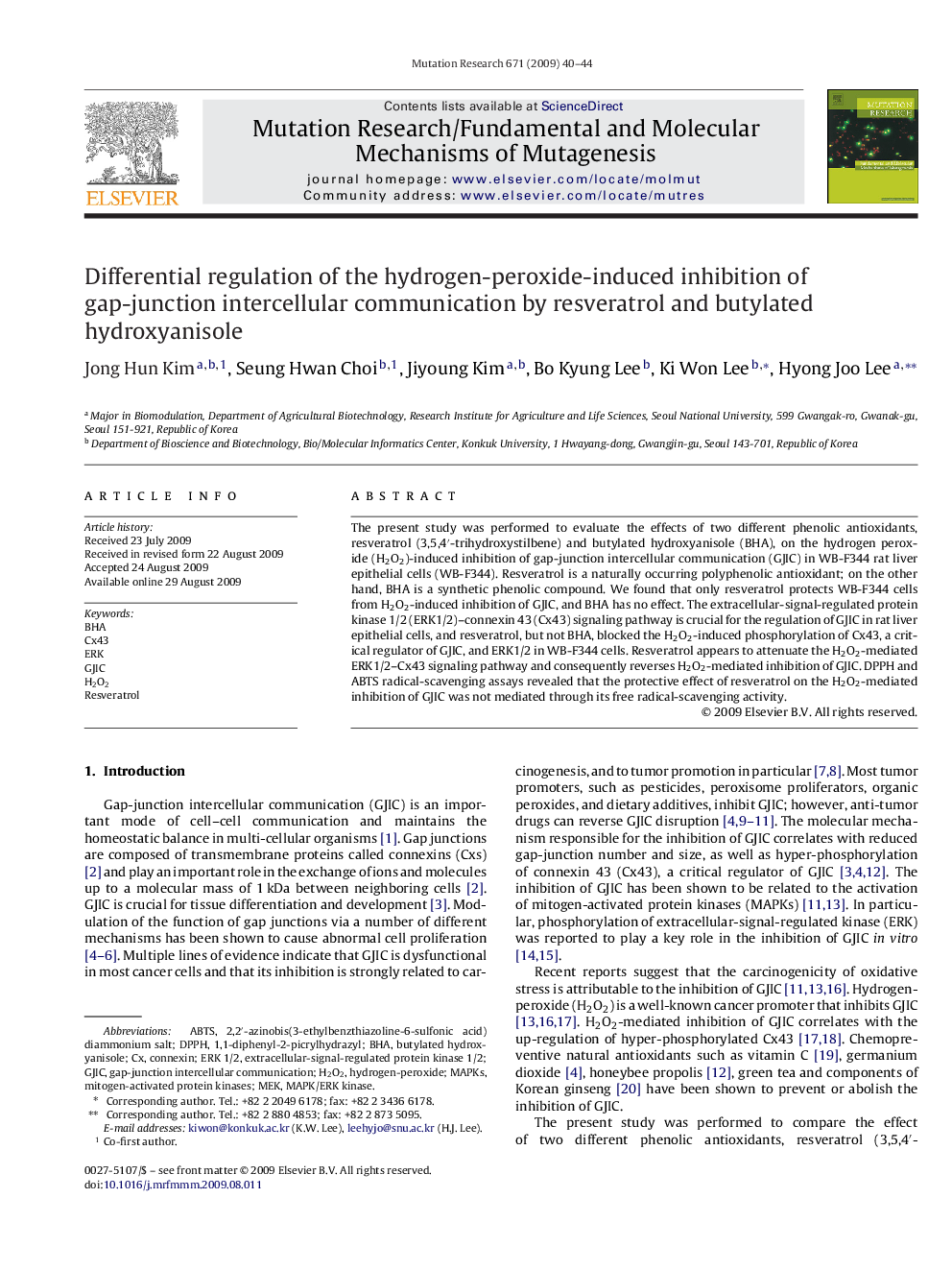| Article ID | Journal | Published Year | Pages | File Type |
|---|---|---|---|---|
| 2146843 | Mutation Research/Fundamental and Molecular Mechanisms of Mutagenesis | 2009 | 5 Pages |
The present study was performed to evaluate the effects of two different phenolic antioxidants, resveratrol (3,5,4′-trihydroxystilbene) and butylated hydroxyanisole (BHA), on the hydrogen peroxide (H2O2)-induced inhibition of gap-junction intercellular communication (GJIC) in WB-F344 rat liver epithelial cells (WB-F344). Resveratrol is a naturally occurring polyphenolic antioxidant; on the other hand, BHA is a synthetic phenolic compound. We found that only resveratrol protects WB-F344 cells from H2O2-induced inhibition of GJIC, and BHA has no effect. The extracellular-signal-regulated protein kinase 1/2 (ERK1/2)–connexin 43 (Cx43) signaling pathway is crucial for the regulation of GJIC in rat liver epithelial cells, and resveratrol, but not BHA, blocked the H2O2-induced phosphorylation of Cx43, a critical regulator of GJIC, and ERK1/2 in WB-F344 cells. Resveratrol appears to attenuate the H2O2-mediated ERK1/2–Cx43 signaling pathway and consequently reverses H2O2-mediated inhibition of GJIC. DPPH and ABTS radical-scavenging assays revealed that the protective effect of resveratrol on the H2O2-mediated inhibition of GJIC was not mediated through its free radical-scavenging activity.
